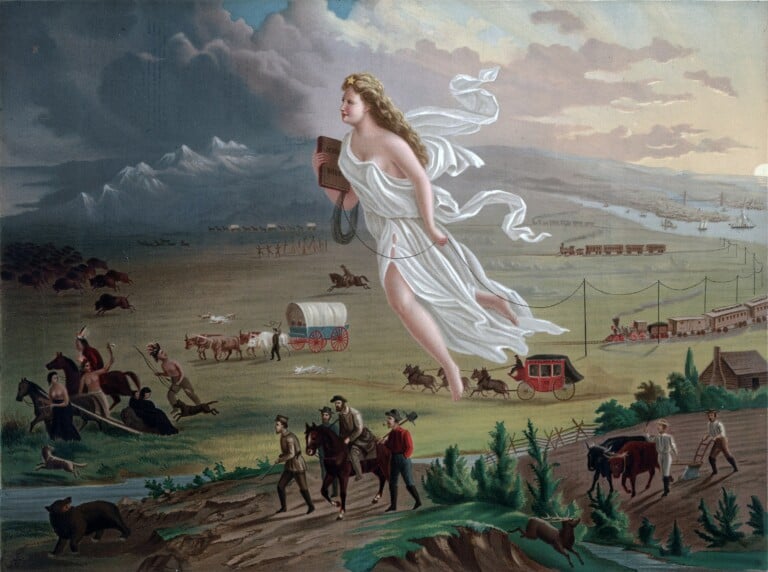Introduction
O’Sullivan is one of the most famous journalists in American history. He is the one who coined the expression “Manifest Destiny”.
He was a Democrat and the official spokesman for American expansion (we should remember that Democrats stood for expansion whereas Republicans were against it).
O’Sullivan wrote two important articles: “The Great Nation of Futurity” in 1839 and “Annexation” in 1845, where he added a justification to American expansion.
For O’Sullivan, the two major words were “manifest destiny” and “justification”. That theme of destiny is not new: since the beginning of American history, the Puritans have always emphasized the special destiny of America.
That conception, based on exceptionalism, was essentially religious and lasted for two centuries.
In the 19th century, the theme of destiny became a political ambition, an official policy led by President Polk, who was elected on a manifest destiny platform. The 19th century was more down-to-earth.
But how could O’Sullivan justify what could not be justified?
Because it was “manifest”, it became merely ideological. Besides, 1839-1845 was the period during which expansion quickened: gradually, one after the other, all states were indexed by the Americans (Texas was surely the most difficult indexation).
In 1845, the Americans were confronted with a double problem:
- there was a fight against the Mexicans on the American continent.
- there was another fight with foreign nations: Britain and France.
The Frontier and the settlers went West on Mexican territories and annexed them one after the other. That is all the history of America: the history of gradual indexation of foreign lands.
The journalist was instrumental in the American expansion. 1845 knew the birth of the United States. O’Sullivan found the argument to justify the future expansion of the United States on the American continent: it is “manifest”.
Indeed, look at the map: it is manifest that Americans should own the whole territory. Thus, expansion justifies expansion (auto justification). It is like a wave: nobody can resist America.
Synopsis » From the Puritan settlements to the American Civil War (1787-1877)
- Antebellum South
- Introduction to Puritanism and Expansionism
- Life in the Plantations
- USA: North and South
- O’Sullivan’s Manifest Destiny
- The social context of America in the early 19th century
- The American Civil War: 1861-1865
- America: The New Nation
- After the American Civil War: The Reconstruction
- America: West to the Pacific
- Years of Growth

